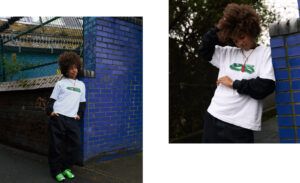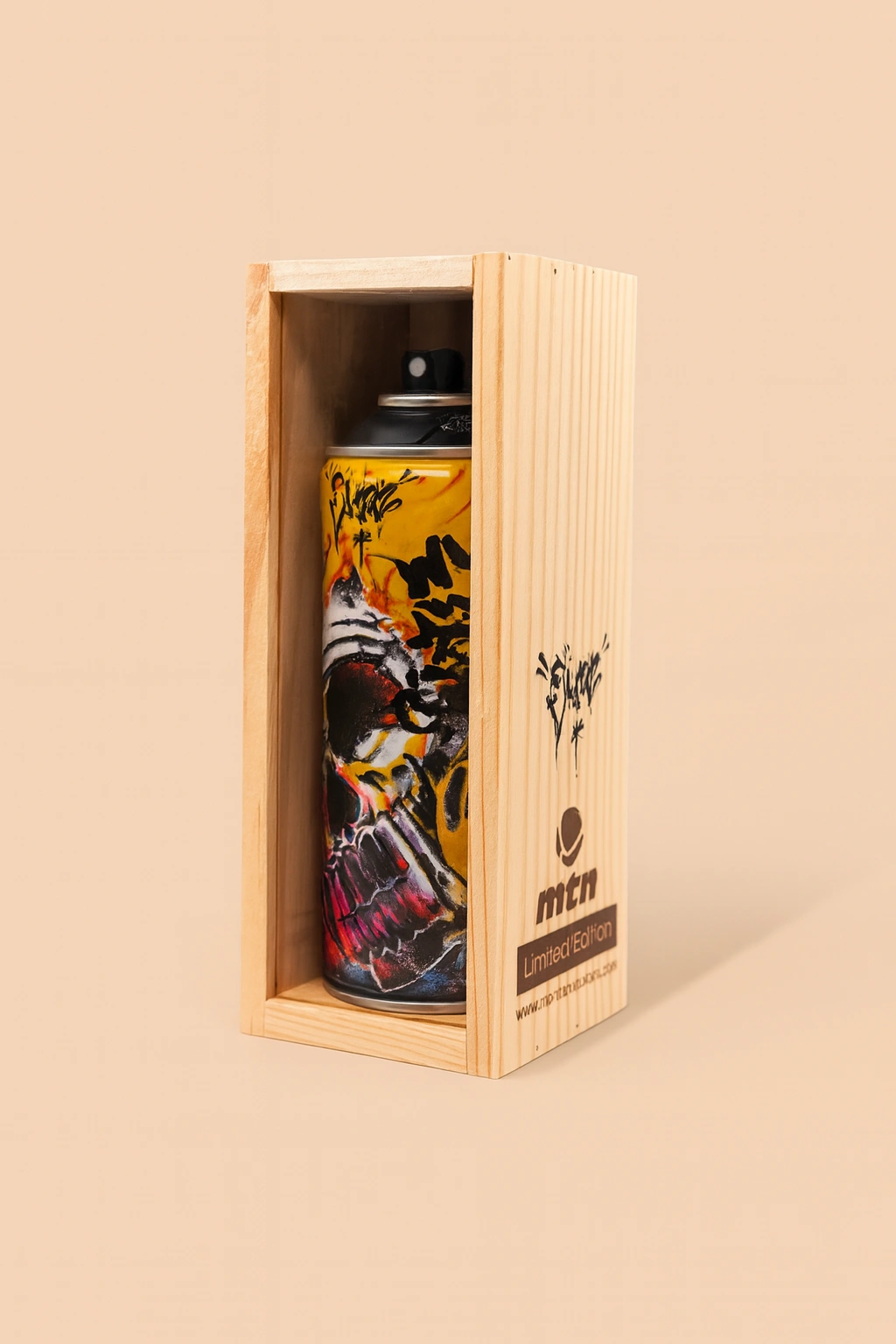In the palette of contemporary London, where subcultures ripple beneath cobblestones and creative collectives form faster than the clouds roll in, few figures capture the moment quite like Teoni Hinds. The 24-year-old artist from North West London—now based in the vibrantly chaotic quarters of the East—brings a voice that’s neither shouting for space nor whispering for permission. Her art is luminous, assertive, and entirely lived-in, shaped by realism yet embroidered with intimacy. She is both emerging and arrived, a paradox mirrored in her own disarmingly candid reflection: “I don’t feel like I’ve even entered the art world. I think there’s still a lot more to be done.”
This tension between presence and pursuit threads through every aspect of Hinds’ journey. Her aesthetic isn’t constructed from trends or theories; it’s grown—organically, humbly, and in full color—out of the interplay between cultural memory, communal participation, and an honest reckoning with the tools she inherited from formal education. While her training in fine art taught her technique, it’s London itself—its markets, its people, its contradictions—that animated her approach.
Hinds’ work is realism, but not the brittle kind. Her canvases don’t simply imitate life—they host it. Her figures, often bathed in vibrant hues and subtle gestures, do not sit still. They breathe. Their eyes meet yours with an unspoken assertion: they are not being looked at, they are looking back. That mutual recognition, rooted in empathy and informed by her own upbringing in a city where anonymity and intimacy coexist, forms the foundation of her visual language.
It’s a language now being translated into something far beyond gallery walls: a community. What began as a modest idea—an art club sparked in collaboration with fellow London-based artist Slawn—has grown into something tectonic. Not through strategic branding or careful planning, but precisely because it wasn’t planned. “Slawn randomly said he bought a café so let’s make an art club,” Hinds recalls, referring to the now-popular BeauBeaus space in East London. “When we do things, we don’t talk about them extensively at all.”
That nonchalance belies an instinctual understanding of what creative infrastructure should look like in 2025. Art, for Hinds, isn’t just a solitary discipline, it’s a generative one—something that should ripple outward, like ink spreading on wet paper. Her community art workshops aren’t top-down lectures. They are circular conversations. Through them, Hinds is not just sharing technique but redistributing possibility, especially to those who, like her younger self, didn’t grow up seeing art as a viable path. “There were literally four or five people in my art class in school,” she remembers. “It was a very overlooked subject. Now in the art club, there are hundreds.”
That scale, and the intimacy it maintains, says more about Hinds’ influence than any institutional accolade ever could. She’s redefining what it means to build an artistic career—one grounded in visibility and generosity rather than individual acclaim. And in doing so, she’s also reimagining how style, space, and selfhood intersect. This is where fashion enters—not as an accessory to her identity, but as another medium through which she understands character.
“I love London,” she says. “It has such a vibrant energy. People hate it, but you know, you can never really hate home.” That duality—a city both maddening and magnetic—finds an echo in Hinds’ perspective on fashion. She describes her personal style as “minimal, functional, and uniform,” likening it to the predictable wardrobe of a cartoon character. But it’s not apathy. It’s intentionality. Her creative energy is reserved for the canvas, while her clothes offer the reliable armor required to move through the physical world.
And yet, her paintings tell a different story: one where fabric, color, and silhouette are integral to identity. Fashion, for Hinds, is not about what you wear—it’s about what it reveals. “I like to let the art do the talking rather than the clothes,” she says. But in her art, the clothes do speak. They announce context, emotion, even ancestry. The creases in a denim jacket, the drop of a shoulder, the way sunlight hits synthetic polyester—these details carry weight in her work, offering a glimpse into the subject’s private universe before we know anything else about them.
It makes perfect sense, then, that PUMA’s H-Street sneaker—reimagined with a punchy color palette and low-profile silhouette—would be part of her story. A shoe born from running heritage but retooled for contemporary life, the H-Street mirrors Hinds’ own dual commitment to tradition and innovation. Styled with a layered button-down shirt and a varsity jacket, she renders the sneaker not as a product, but as part of her daily ritual. There’s paint on her fingers, sure, but there’s grip on her feet—a subtle nod to the idea that mobility, both creative and physical, requires the right kind of grounding.
In her collaboration with PUMA, Hinds isn’t simply modeling a shoe. She’s modeling a mode of being—one that fuses endurance with elegance, simplicity with substance. The H-Street doesn’t shout for attention. Like Hinds, it simply shows up, ready to do the work.
This partnership between artist and brand reflects a broader shift in how fashion and art converge today. No longer are they siloed spheres operating in parallel. Instead, they’re increasingly symbiotic, each lending the other language, texture, and audience. For PUMA, aligning with Hinds signals a commitment to not just aesthetics, but ethos—recognizing that creativity lives in community, and that the next wave of innovation will come not from the top-down, but from the grass roots.
And Hinds, for her part, doesn’t just occupy this moment—she expands it. Whether hosting workshops in East London, painting intimate portraits in her studio, or lacing up shoes for a day of navigating both city streets and creative challenges, she moves with quiet confidence. She is a mirror for the city she calls home: restless, radiant, unfinished.
There’s a reason her work resonates so deeply with younger generations. It’s not just because she looks like them, dresses like them, or paints people who remind them of their own families. It’s because she offers a model of success that isn’t bound by institutions or metrics. Her path is one of self-definition, of slow building, of investing in others. She doesn’t position herself as a star. She positions herself as part of a constellation—connected, contextual, and luminous in her own right.
In a time when the art world often still prioritizes exclusivity and hierarchy, Hinds is carving a radically inclusive route—one where access is everything, and where everyone has a seat at the table, so long as they bring curiosity and care. Whether or not she “feels” she’s entered the art world is beside the point. She’s shaping its future, and doing so on her own terms.
As for what comes next, there’s no grand blueprint. That’s the beauty of Hinds’ approach. “We don’t talk about things extensively at all,” she says again, smiling. The art leads. The community gathers. The moment grows.
And on her feet? PUMA’s H-Street sneaker, already coated in the dust of the day’s work, already ready for the next one.
No comments yet.









